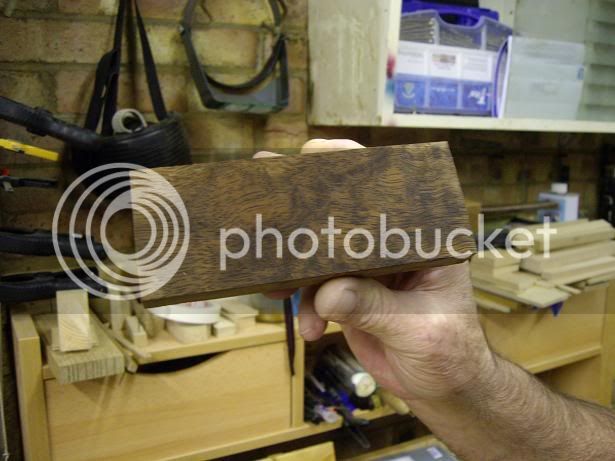Philly
Established Member
Jim
I've had conversations with Karl on the "tight mouth" subject - he feels the "super-tight" mouths which a lot of custom plane makers incorporate in their planes are un-necessary.
I think it's pretty easy to demonstrate that a tight is superior to a wide mouth when planing difficult timbers, but its only one of many factors that go toward making a good plane (and especially a smoother, which is what we're really talking about here.) A well supported iron, secure and even clamping pressure, flat sole and also a pleasant amount of mass all contribute to a good cut. And when we add high effective pitch into the equation we end up with a plane that has no excuse for not performing well. Time to learn to sharpen...... :lol:
As for the "back iron", as the chipbreaker used to be called. Larry Williams believes they were introduced as a cost saving exercise - he has some interesting info on this on his website. I believe back irons do two things - they apply pressure to the iron at the cutting edge, supporting and maybe "pre-tensioning" it. I also believe they act in a small way as a heat-sink, emulating the way a thicker iron would absorb heat - we've all used card scrapers and got burnt thumbs. Imagine how much friction occurs at the cutting edge? Just a theory, but hopefully it will get you thinking.
Hope this helps,
Philly
I've had conversations with Karl on the "tight mouth" subject - he feels the "super-tight" mouths which a lot of custom plane makers incorporate in their planes are un-necessary.
I think it's pretty easy to demonstrate that a tight is superior to a wide mouth when planing difficult timbers, but its only one of many factors that go toward making a good plane (and especially a smoother, which is what we're really talking about here.) A well supported iron, secure and even clamping pressure, flat sole and also a pleasant amount of mass all contribute to a good cut. And when we add high effective pitch into the equation we end up with a plane that has no excuse for not performing well. Time to learn to sharpen...... :lol:
As for the "back iron", as the chipbreaker used to be called. Larry Williams believes they were introduced as a cost saving exercise - he has some interesting info on this on his website. I believe back irons do two things - they apply pressure to the iron at the cutting edge, supporting and maybe "pre-tensioning" it. I also believe they act in a small way as a heat-sink, emulating the way a thicker iron would absorb heat - we've all used card scrapers and got burnt thumbs. Imagine how much friction occurs at the cutting edge? Just a theory, but hopefully it will get you thinking.
Hope this helps,
Philly








